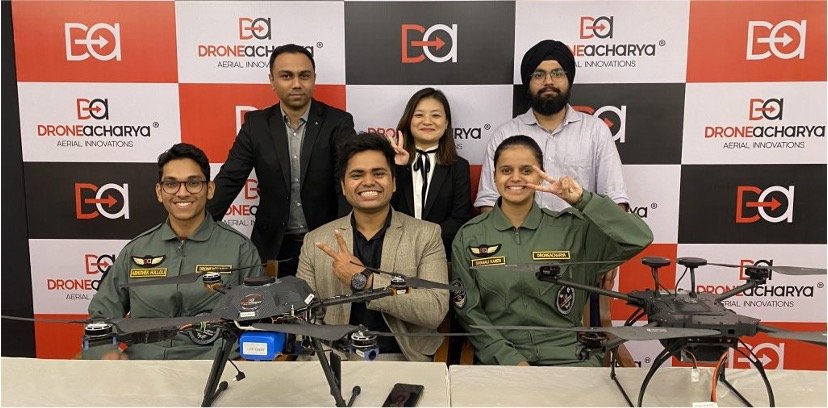We are proud to announce Team DroneAchrya has successfully demonstrated its range of indigenously developed multiple drone variants. This includes 10-inch first-person view (FPV) drones and fiber-optical kamikaze drones in open trials with the Indian Army at high altitudes and adverse weather conditions with electronic warfare (EW) environments in the presence of jammers with a capability of jamming till 80km range, in the state of Uttarakhand.
This series of trials marked the successful deployment of FPV drones operating at a base elevation of 9,200 feet above mean sea level (MSL). DroneAcharya’s FPV drones achieved flight altitudes of up to 3,281 feet above ground level while covering a total aerial elevation of over 12,500 feet MSL. The mission-critical flights were conducted under adverse weather conditions, within sub-zero temperatures. In the high-altitude night operations with thermal camera integration, the FPV drone completed a 14 km night vision-enabled flight, showcasing reliable endurance and visibility in low-light combat scenarios, essential for modern infantry support in mountain warfare.
The key highlight of the exercise is an optical fiber-enabled kamikaze drone that flew in frequency-jammed conditions, equipped with a 500-gram warhead. The drone operated in an active electronic warfare (EW) environment, executing a precision strike, hitting the bullseye within a 2m radius and neutralizing the designated target 5 km away. This marked a significant leap in India’s indigenous FPV strike drone capabilities. It replicated real-world battlefield threats where communication may be compromised.
The participation in these trials highlights how, in the absence of artillery or air support, kamikaze drones are poised to support the infantry operations, offering an advantage even in challenging terrain. This strengthens India’s unmanned systems arsenal through modular platforms designed for rapid deployment and multi-mission versatility.
More than just a successful test, this achievement represents a vision for global military technology security trends, where lightweight, man-packable UAVs are integrated with thermal vision, autonomous tracking, and real-time strike capabilities, supporting frontline tactics in high-altitude, GPS-denied, and frequency-jammed environments. This is not just a vision inspired by a successful test flight; it’s the first step toward building sovereign, scalable UAVs for India’s ground forces.





